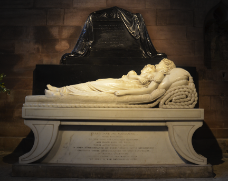Sir Francis Chantrey [Tate] (1781-1841): Art, Man, and the Earth in Early Nineteenth-Century Britain
Overview
Sir Francis Chantrey was widely considered to be Britain’s greatest sculptor at the time of his death in 1841. As a sculptor of portraits and monuments, the reasons for his pre-eminence are often opaque to modern audiences and scholars, for whom the sculptured portrait remains a neglected genre. This module will look to comprehend the reasons for Chantrey’s success by studying the man and his work within the intellectual context of early nineteenth-century Britain. We will look at Chantrey’s sculptural practice and aesthetics within the emerging sculpture market, but especially within the expanding field of scientific enquiry in the period. Chantrey was a significant figure in the worlds of Geology and Zoology, and took an interest in numerous other branches of natural science, industry, and engineering, all of which influenced his work and his reputation.
The course will combine analysis of biographical texts, art historical writings, contemporary scientific writing, and close study of objects. As the scientific aspect of Chantrey’s career has not always been at the forefront of his biography, students will be expected to think creatively about how sculpture relates to natural science at this time, and to gain a deep understanding of the materials of sculpture, and the aesthetics of portraiture. There will be a field trip to view Chantrey’s works around London’s collections and squares.

Module information
- Module title
Sir Frances Chantrey: (1781-1841): Art, Man, and the Earth in Early Nineteenth-Century Britain- Module number
HOA00086M- Convenor
Greg Sullivan
For postgraduates
- Handbooks
- MA Modules 2023-2024
- Assessment
- Postgraduate funding
- PhD/MPhil supervision and training
- Resources
- Student activities
